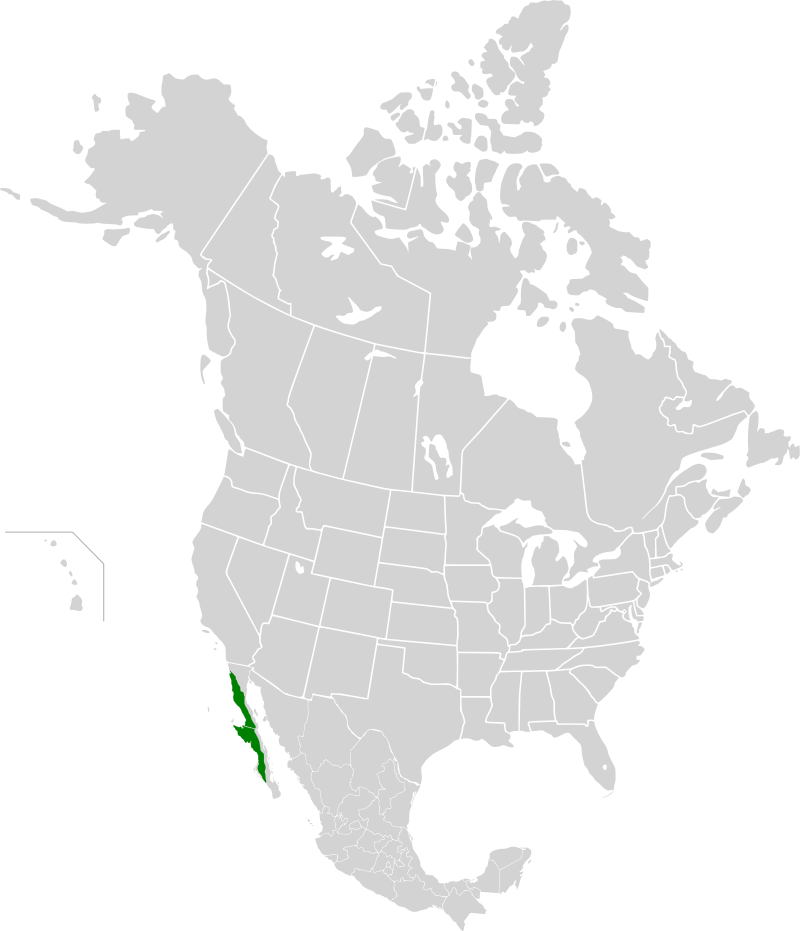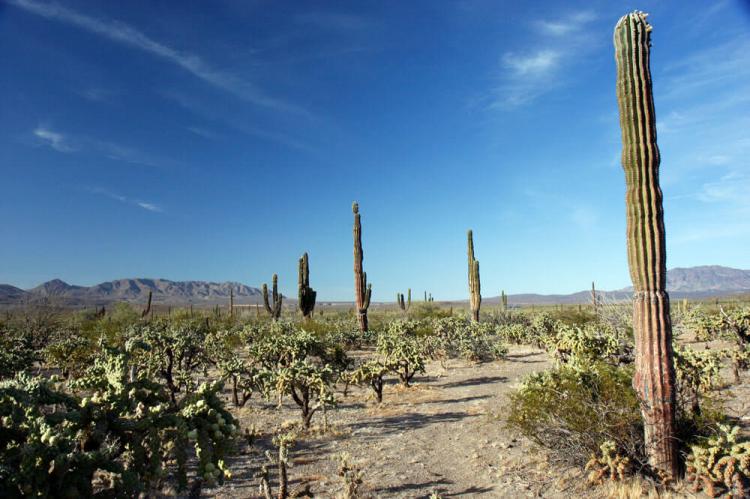The Baja California Desert: Nurturing Life in Aridity
The Baja California Desert spans the Mexican states of Baja California Sur and Baja California Norte, situated on the western side of the Peninsular Ranges in the northern and central Baja California Peninsula. It forms a diverse geographical mosaic, showcasing biodiversity and resilience.
The Baja California Desert
Nurturing Life in Aridity
Embraced by the Mexican states of Baja California Sur and Baja California Norte, the Baja California Desert unveils itself as a landscape and a designated ecoregion, a testament to its ecological significance. Spanning approximately 77,700 square kilometers (30,000 square miles) on the western stretch of the Baja California Peninsula, this arid marvel is more than a desert; it's a geographical mosaic and a dynamic display of biodiversity and resilience.
Geographical Diversity: Pacific Oasis Meets Peninsular Ranges
Situated between the Pacific Ocean to the west and cradled by the Peninsular Ranges to the east, the Baja California Desert is a geographical mosaic. Elevations fluctuate, creating mountain ranges with peaks at 1,000 to 1,500 meters (3,000 to 5,000 feet), plains at a median elevation of 300 to 600 meters (1,000 to 2,000 feet), and extensive coastal dunes. Its unique positioning next to the Sonoran Desert on the east slope of the Peninsular Ranges adds an extra layer to its ecoregional identity.
Climate Ballet: Subtropical Aridity with Pacific Influence
In the rhythmic dance of climate, the Baja California Desert experiences dry, primarily subtropical conditions, with a tropical touch in its southernmost reaches. Despite sparse rainfall, the ecoregion benefits from the Pacific's proximity, infusing a delicate humidity that tempers temperature extremes. This climatic ballet shapes an environment where life adapts ingeniously to the arid embrace.
Floral Symphony: Xeric Wonders and Desert Adaptations
The flora of the Baja California Desert is a symphony of xeric shrubs and cacti, showcasing around 500 recorded species of vascular plants. Amidst the rocky volcanic soils, thick-stemmed trees and shrubs thrive, with the iconic Boojum tree (Fouquieria columnaris) standing tall at elevations up to 1,200 meters (3,900 feet). This is not just a desert garden; it's a testament to nature's ability to flourish in arid landscapes.
Faunal Composition: Endemics, Raptors, and Avian Spectacles
Wildlife takes center stage in this ecoregional drama, featuring endemic and endangered species finely tuned to the harsh ecological conditions. Mammalian inhabitants like the San Quintín kangaroo rat and the Baja California rock squirrel find their niche. Avian wonders grace the skies, with the golden eagle, peregrine falcon, crested caracara, osprey, and burrowing owl adding a majestic touch. Along the Pacific coast, the Ojo de Liebre Lagoon becomes a winter refuge for millions of waterfowl, creating a spectacular avian spectacle.
Conservation Overture: El Vizcaíno Biosphere Reserve
Preserving this ecoregional gem has been a priority, with conservation efforts establishing havens for biodiversity. Around 60% of the Baja California Desert falls under protection, and at the heart of this conservation endeavor lies the El Vizcaíno Biosphere Reserve. As the largest protected area in Mexico, it serves as a sanctuary for the ecoregion's unique life forms. However, challenges like heavy cattle grazing and unregulated hunting have left imprints, emphasizing the ongoing need for vigilant conservation.
Ecoregional Essence: A Living Testament to Arid Beauty
In conclusion, the Baja California Desert transcends the conventional definition of a desert; it stands as an ecoregional marvel, a living testament to the resilience of life in aridity. From its geographical diversity to the intricate dance of climate, flora, and fauna, every aspect weaves a story of adaptation and survival. As conservation efforts continue, the Baja California Desert beckons us to appreciate the delicate balance between nature and aridity, inspiring us to cherish and protect this ecoregional Eden.

Map depicting the approximate area of the Baja California Desert ecoregion on the Baja California Peninsula (in green)
